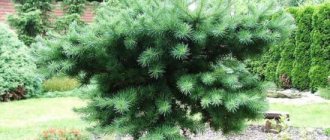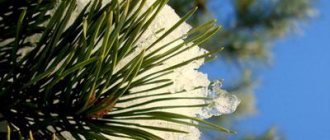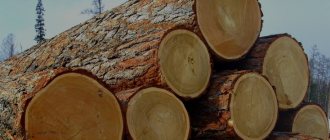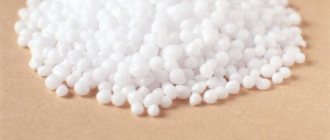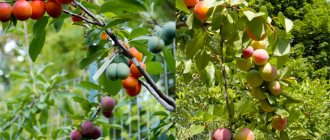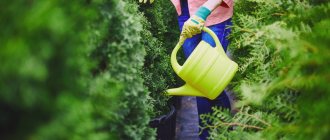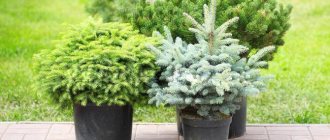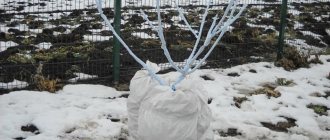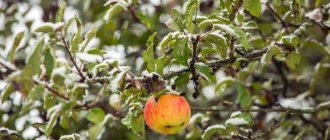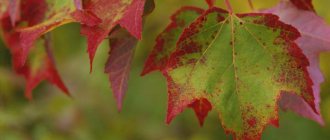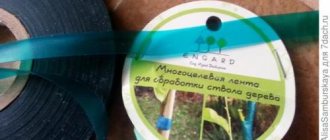Coniferous tree that sheds needles
Coniferous trees are characterized by a periodic change of needles. This is a gradual renewal of trees, which occurs not in a specific season, but throughout the year. Coniferous trees that shed needles include:
Larch
Deciduous coniferous tree, which is common in Western and Central Europe. It grows in the Alps and Carpathians, located at altitudes from 1000 to 2500 meters above sea level. Its height reaches 50 meters, and its trunk diameter is 1 meter. But dozens of decorative forms have been developed, including dwarf ones, that will decorate the garden without taking up much space. It is planted in public places in several groups, on alleys or in courtyards. Unlike other representatives, the needles are not sharp, soft and easily break when pressed. At the same time, the wood of this coniferous tree is one of the strongest in the world.
It is characterized by the following properties:
- frost-resistant;
- unpretentious to the soil;
- adapts well to urban conditions.
Larch is a coniferous tree that sheds its needles for the winter. This feature appeared as a result of its adaptation to harsh climates and low temperatures. Thus, she spends a minimal amount of energy in the winter cold.
Swamp Cypress
The second type of coniferous tree that sheds its needles for the winter is the swamp cypress or taxodium. It received this name because it grows near swamps in the forest. It was also not by chance that it was called cypress. The spherical cones of this plant strongly resemble the inflorescences of real cypress. The difference is density. The cones of ordinary cypress are hard and strong, but those of taxodium easily crumble in the hands when pressed.
The main feature of the tree is the presence of pneumatophores. They mean the root system, which grows upward rather than downward. From the outside it is an impressive sight. They help the taxodium to breathe, since air penetrates into the shoots through the respiratory roots.
This is vital for the tree, since the soil of swamps is not intended for growing plants, and excess water and lack of oxygen can have a detrimental effect on further growth
Without pneumatophores, Taxodium could not exist. Thanks to them, it grows quietly in areas covered with water for several months. In such conditions, the respiratory roots are located above the water level and supply the swamp cypress with air. The maximum possible height is 3 meters.
There are two types of taxodium:
- Taxodium biserialis;
- Taxodium mexicanis.
The birthplace of Taxodium biseriata is the southeast of North America, Mexico. It was brought to Europe in the mid-17th century. Cultivated as a park plant and forest species. Reaches 50 meters in height. Tolerates temperatures down to minus thirty degrees.
The height of an adult tree is 30-45 meters, the trunk in diameter is up to three meters. The needles are bright green. In autumn, the leaves turn red, acquire a golden-orange hue, and then fall off along with the young shoots.
Taxodium Mexicana grows only in Mexico at an altitude of 1400-2300 meters above sea level. The average lifespan of such a tree is 600 years. Some specimens live up to 2000 years. Moreover, their height is 40-50 meters, trunk diameter is 9 meters.
Swamp cypress is a valuable material for building houses and making furniture. Its wood is durable, has good mechanical properties, and is resistant to rotting.
Metasequoia
Belongs to the cypress family. Distributed in areas of Hubei province. Needles up to 3 centimeters in size change color depending on the arrival of a particular time of year. For example, in the spring they are light green, darken in the summer, and turn yellow before falling. They begin to grow late, around the end of May.
Characteristic features of metasequoia:
- easily propagated by both cuttings and seeds;
- reaches up to 40 meters in height and up to 3 meters in width;
- durable - some representatives live up to 600 years;
- shade-tolerant, but prefers open places for growth;
- common in mountainous areas and along rivers;
- unpretentious to temperature conditions, but feels ideal in humid subtropics.
Siberian larch sheds its needles for the winter, what else is interesting about it
Siberian is distributed throughout Russia from the Sea of Okhotsk to Lake Onega. It is considered the main species that forms the forests of this region.
Features of the species include:
- Unlike other types of wood, the durability of wood only increases over time, which is why it is often used in the construction of houses and shipbuilding. In museums you can find products made of larch, which over the centuries spent in the mounds of Altai have only darkened.
- A large number of Russian cities were built on this wood. In addition, it is known that even in tsarist times it was exported. So the piles of the houses of Venice were also made from this very rock;
- In addition to deciduousness, the plant is distinguished by its ability to live from four hundred to five hundred years;
- Larch is a dioecious plant, that is, both female and male cones are located on the same tree, which is typical for many coniferous species;
- The plant tolerates not only a decrease, but also a significant increase in temperature. This feature makes it possible to grow it not only in the harsh conditions of the north, but also in the hot south. Drought, with proper care, will not harm the tree;
- The tree trunks are straight and can reach a height of thirty to forty meters. But sometimes they can exceed this size up to fifty meters with a trunk thickness of up to two.
The mechanism of shedding leaves for the winter has developed in larch as a result of climate change. Seasonal cooling significantly worsens the process of enriching the plant with water, and in the presence of green foliage this disadvantage is significantly aggravated.
To avoid the danger of dying due to lack of water and oxygen, the larch was forced to adapt.
Being an unpretentious and hardy species, larch has spread widely across many regions and areas of the globe. It is used both as a garden and industrial crop. A tree can not only decorate the site, but also ensure the longevity of the building.
Coniferous trees with needles falling off in winter
Here is the first one. In winter, it is very similar in appearance to larch. However, an attentive eye will notice that there is not a single cone on the tree. There are a lot of rhombic, slightly thickened woody plates lying under the tree. Here you can also find winged seeds, reminiscent of pine and spruce seeds, only slightly larger.
It is easy to guess that the rhombic plates are nothing more than scales of cones that have fallen from the tree. Consequently, the cones crumble when ripe, just like real cedar. And if so, then it is not larch (its cones never fall apart and hang “intact” on the branches for a long time). Before us is a completely different plant - Kaempfer's false larch (Pseudolarix kaempferi).
Swamp cypress has the rare ability to develop special respiratory roots, the so-called pneumatophores. Unlike ordinary roots, they grow upward, rising above the ground. Their appearance is very peculiar - thick, woody shoots of a bizarre shape, resembling either skittles or some kind of knotty bottles.
Breathing roots consist of very light, porous wood, although quite strong; there is a channel inside
They are vital for the plant. Through these shoots air penetrates to the root system of the tree, hidden in the swamp soil.
And the soil of swamps is very unfavorable for plant life due to excess water and lack of oxygen.
Thanks to its breathing roots, swamp cypress can grow in areas that are covered with water for weeks or even months. Under these conditions, vertical roots grow to such a height that they are above the surface of the water. Their maximum height reaches 3 m.
The swamp cypress exhibits the phenomenon of branch fall, which is already familiar to us - in the fall, entire branches fall off along with the needles. True, this does not happen with all branches. Some of them remain on the tree, only needles fall off.
The geographical distribution of swamp cypress is interesting. It currently grows wild only in southeastern North America. But before it was widespread across the globe, including in Europe, where fossil remains of this plant are often found. Swamp cypress is one of North America's most valuable timber trees and is heavily harvested. Its wood is an excellent building and ornamental material; it remains in the soil for a long time.
The third deciduous conifer is the famous metasequoia (Metasequoia glyptostroboides). This tree is in the truest sense of the word “living fossil”: it is as if “resurrected from the dead.” It was found only in fossil form and was considered completely extinct. And suddenly on the 8th of 1941-1942. In one of the regions of China, scientists accidentally discovered a living, rather old metasequoia tree.
It is clear that in the Batumi Botanical Garden, as in other gardens, you can only see young specimens of metasequoia, they are no more than 20-30 years old.
What is metasequoia? This is a slender tree with a straight trunk and a cone-shaped crown, which starts almost from the ground. In summer the tree is very decorative - the crown has a beautiful soft green color. The needles are soft, and individual needles are almost the same as those of a swamp cypress.
In winter, metasequoia does not attract attention to itself - only bare branches. If you look at it from a distance, you won’t even think that it’s a coniferous tree. And even up close you won’t recognize it right away. True, if you look at the ground, you can see that under the tree there are not leaves, but reddish dry needles. More precisely, whole branches with pine needles.
Metasequoia, like swamp cypress, is a branching tree. In winter, when there are no needles on the trees, the branches of both plants are quite similar. However, in metasequoia, thin young branches are located differently than in swamp cypress: they extend from thicker branches in pairs, one against the other.
Do larch needles fall?
Larches are long-lasting and hardy trees. These plants are able to adapt to various natural factors and quickly cover new territories. The needles of the culture look like needle-like leaves of different lengths. They are soft, unlike spruce and pine needles, since they do not have hard mechanical tissue inside. Like all deciduous plants, every autumn larch turns yellow and sheds its green outfit, which is why it got its name.
In spring, it is covered with young bright green leaves, which over time change their shade to dark: thus the needles become more like needles. Cones appear on the branches of the plant. Their size and quantity depend on climatic conditions and region of growth. In autumn, the larch turns yellow and falls, covering the soil with a beautiful carpet of lemon-yellow hue. All winter the trees stand with bare branches.
In winter, buds appear on the branches again, looking like small spherical tubercles: in appearance they differ from the buds of other conifers. With the arrival of spring, shoots that are different from each other appear from them. The uppermost bud produces a long stem with single needles. When the lateral buds bloom, a short bunch is formed, combining many small needles growing in different directions. The stem is not developed here, and the soft needles are closely collected at one point. One bunch contains several dozen needles.
Are the needles falling off?
The needles are replaced annually, like the leaves of other plants; up to 70-80 percent of the needles change in a year. The process is not noticeable, it occurs gradually - so the spruce always looks green and lush. If a coniferous plant sheds its needles en masse, the process indicates that it is severely ill. Massively yellowed, browned needles also indicate this. Normally, spruce, fir and pine trees remain green all the time.
Interesting fact: larch is the only exception - in the fall its needles turn yellow and then fall off. New ones appear only in the spring.
Conifers are one of the most ancient plants; they have developed a lot of mechanisms that allow them to successfully survive in cold climates. They also have healing resin that protects against wounds and provides disinfection. Parasites rarely settle on these trees, and the annual ripening of cones, which contain seeds protected from adverse influences, allows them to effectively reproduce and restore their habitat in the event of forest fires and other incidents.
Even a cut down Christmas tree remains green for several weeks. Only then do the needles begin to fall off and the needles no longer look so attractive. A deciduous plant fades much faster.
Thus, the green color of the needles is provided by the chlorophyll that they contain, ensuring photosynthesis and the normal functioning of the plant. Greenery is present all year round, since conifers are not associated with the need to shed their crowns for the winter; the needles tolerate frost well and do not require the plant to seriously consume nutrients for its maintenance. Pine and spruce trees have the luxury of being evergreen even in harsh northern climates - which is probably why they are such a favorite New Year's decoration.
Reasons for yellowing of needles in summer
Unlike deciduous trees, larch is very rarely exposed to pathogenic microorganisms due to the fact that its composition includes phenolics, tannins and resins. However, like any other plants, larch can still be exposed to various diseases and pests, as a result of which its needles may turn yellow before autumn. In case of disease, putrefactive bacteria and fungi primarily affect the needles. Most often, larch is attacked by the following diseases and pests:
- The Schutte mushroom infects trees in May-June under conditions of high air humidity. At the same time, the larch turns yellow. The disease can be identified by the appearance of red-brown spots on the tips of coniferous leaves. Larch needles fall off. To protect the plants, from July to September the crowns are sprayed with Bordeaux mixture or 2% colloidal sulfur.
- Melampsoridium fungus causes rust. The needles of the plant turn yellow and become spotted. For prevention purposes, trees are sprayed with fungicidal agents. In addition, they try not to plant larch next to birch, which is an intermediary in the transfer of the fungus.
- Hermes aphids are a type of insect that sucks juice from young needles. The needles turn yellow, dry out and fall off. Individuals of the spruce-leaf Hermes form green growths on the shoots - galls, reminiscent of velvet. The needles become yellow at the site where the aphids are sucking, become deformed and curl. Shoots with such growths always die. Insecticides containing mineral oils will help in the fight against hermes. These substances are capable of dissolving the protective wax coating of pests.
To care for a tree, you must follow the basic rules:
- Larch needs to be watered and fed in a timely manner, broken, dried branches and falling needles must be removed so that parasitic insects do not infest it.
- Damage to the bark must be covered.
- It is recommended to loosen the soil and mulch with hay, peat, sand, sawdust, and manure.
Is the only coniferous tree that sheds its needles for the winter, others are deciduous?
Despite the fact that larch is considered the most famous and widespread tree that sheds its needles for the winter, there are several other types of deciduous conifers.
Metasequoia
The first is Metasequoia, which is a coniferous plant and belongs to the cypress family.
Features of this plant include:
- The bulk of representatives are distributed in the Hubei province area;
- The average tree height is 35-40 m, cut diameter is 2 m;
- The branches are located oppositely, forming a wide-conical crown;
- Can reach an age of more than 600 years;
- Distributed on mountain slopes, along river beds and the edges of hollows, where it forms mixed forests;
- It is distinguished by its ease of reproduction and growth rate. Thanks to the latter, it develops quickly, both when propagated by cuttings and seeds;
- It is unpretentious to soil conditions and temperature fluctuations, although it thrives best in humid subtropical countries.
This relict genus contains several species. Matasequoia cones are hanging with shield-like woody scales.
Swamp Cypress
Another representative of deciduous conifers is Taxodium double-rowed or swamp cypress.
Characteristic features of these large trees include:
- Widely distributed in marsh regions of the United States from Texas and Florida to Delaware;
- It reaches a height of 35-45 m;
- Narrow and long leaves are arranged in several opposite rows and reach 1.3-1.9 cm in length.
An interesting feature of Taxodium is the fact that regular excessive watering provokes expansion of the lower part of the trunk. As a consequence, the development of pneumatophores, outgrowths that rise above the soil and water.
Widespread in swampy areas for additional anchorage to the soil.
Shedding needles in winter is a characteristic feature of some genera. One of the most common representatives of this group is larch.
Dropping the needles helps the larch to endure the cold snap of winter as painlessly as possible.
For more detailed information about larch and its cultivation, watch the video:
It is believed that larch is the only coniferous tree that gets rid of the thorns that have grown over the summer during the winter. Larch developed this unique mechanism for conifers as an adaptation to the sharply cold climate. Larch is a very beautiful tree with valuable wood. There are several species, the easternmost of which, Kaempfer's larch, lives in Japan.
The pine family includes not only our beloved pine. The pine family includes larch, a tree with needles instead of leaves. They gave larch this name because a tree with needles sheds its needles, like a birch tree, like aspen, poplar, maple and any other deciduous tree. So we answer that the larch remains without needles in the fall. But the larch remains without needles in the second year of its life; in the first year, the larch overwinters with needles. Scientists believe that this is how adaptation to harsh climate occurs.
Different types of larches shed their needles at different times. Observations show that Siberian larch remains without needles by the end of October, American larch remains without needles in November.
Why does larch shed its needles?
The main reason for shedding needles is to protect yourself in winter. It grows in harsh conditions where other trees no longer grow. By shedding the needles, it gets rid of excess moisture, because the root system does not absorb moisture from the frozen soil. Thus, shedding needles helps to painlessly survive severe frosts in winter.
Features of wintering larch:
- shedding of needles begins at the end of September, which allows relatives to live to the north;
- with the help of shedding, it protects itself from drying out, which is typical of coniferous trees when the soil freezes in winter;
- In winter it goes into a kind of hibernation, development slows down and resumes only in the spring.
Conifers and evergreens in the garden.
Spruces, thujas, firs, and in warmer areas cypresses, are used by gardeners as an ideal backdrop for garden and park plants. A chic hedge of evergreens will not only outline the boundaries of your garden, protect you from prying eyes, but also hide the imperfections of the landscape. If you choose spruce as a plant for a hedge, then after 3-4 years of regular pruning, you can get a dense green barrier that neither humans nor animals can overcome. With the help of several thujas or spruce trees, you can zone the garden space and change its perception by planting plants taking into account the different shades of the color of the needles.
Without the use of additional materials, you can organize a quiet nest for reflection, a Japanese-style garden, or maybe a regular English park. And all this will not lose its decorative effect all year long! To make your garden look new every season, you only need to plant beautiful flowering perennials, annuals and bulbous flowers in addition to coniferous and evergreen shrubs. The combination of coniferous plants and roses is considered the most spectacular and noble; by the way, roses are also evergreens and have soil and care requirements similar to conifers.
Hedges made from evergreen boxwood look extraordinary. The shiny bright green foliage of this shrub gives a formal look to compositions, and an undoubted advantage is the ability to trim evergreen boxwood bushes. Topiary art is the art of giving plants different shapes by cutting them. Another facet of using coniferous evergreen trees and shrubs in the art of creating an ideal garden.
The variety of forms is not the only advantage of coniferous plants. Coniferous plants do not require special care and are rarely damaged by pests and diseases. The needles release special phytoncides into the atmosphere, which are known for their properties: healing and purifying the air, and having a positive effect on the human respiratory system. Healing air charges us with energy. Coniferous plants are decorative in the summer, but they are especially beautiful in the winter season, when they create a pleasant contrast with the deciduous forms of plants. Therefore, coniferous plants for the garden are an irreplaceable choice.
Thanks to their impressive size and amazing color of the needles, compositions using coniferous plants will decorate any area. Experiment by planting conifers - dwarf, slow-growing forms of spruce, pine, thuja and juniper in rocky gardens and alpine hills. Covered with juniper paws, rock garden plants will be able to grow comfortably even in the hot sun.
How to care for coniferous trees and shrubs?
Watering. Mostly young trees need watering. They are watered abundantly at least once a week at the rate of 15-20 liters of water per plant. Coniferous trees need to be watered abundantly in the fall - evergreen crops often dry out in winter not from the cold, but from lack of moisture. Drought-resistant species (for example, pine trees) do not need additional watering, but trees such as thuja suffer from a lack of moisture.
Sprinkling. All coniferous plants need sprinkling, especially in the spring and summer. In dry weather, sprinkling is best done in the morning or evening. During the first year after planting coniferous plants, it is carried out every other day. Thanks to sprinkling, the needles are cleaned of dirt and dust.
Mulching prevents the soil from drying out, limits the growth of weeds and maintains the required soil temperature in the root zone. Coniferous bark, peat and fallen leaves are used as mulching material.
How to choose the right place in the garden for a coniferous plant.
Many conifers prefer areas protected from bright sun and cold winds, sufficiently moist soil and good drainage. Plant your coniferous plant in such a place, and it will fully reveal its decorative qualities. Most conifers overwinter better if they are placed in groups.
Coniferous plants that can easily withstand wintering outdoors are better suited as tapeworms. This could be pine, spruce, larch. Plant such conifers along with other ornamental evergreens and deciduous plants, and you will create a warmer and more protected microclimate.
Use in construction
Thanks to its unique properties, larch is an elite building material. The high resin content of the tree protects products made from it from destruction by moisture, making the wood equal in strength to stone. Contact with both fresh and salt water increases its strength and makes it indispensable in shipbuilding and the construction of underwater structures.
For your information! A short excursion into history will tell you that Venice and St. Petersburg stand on larch stilts. Archaeologists have discovered ancient larch buildings that are more than 15 centuries old.
Over time, this tree does not collapse, but becomes stronger. The gum content and resin content in wood preserve it from rotting and parasites. In terms of strength and suitability for construction, larch is not inferior to oak, and in some ways even surpasses it. A straight and knot-free trunk allows you to obtain lumber of excellent quality. The boards and slats have a beautiful pattern and 12 shades of color: from brown to golden.
Amazingly beautiful finishing materials made from Siberian and Daurian larch are in increasing demand in the building materials market. Products made from this wood are highly resistant to mechanical and climatic influences and retain their appearance throughout their entire service life.
This tree conducts heat poorly and has the ability to accumulate and accumulate it. Finishing a log house with such material allows you to keep the house warm in winter and cool in summer.
Note! A long time ago, according to descendants, residents of areas where larch is a rare species looked for trees in the forests that shed their needles in the fall, cut them down and brought them to their yards to build a house. Wood for construction was saved for many years. It happened that only the heir of several generations could build a house made of larch.
In addition to resistance to rot, fire and pests, strength and beauty, larch has medicinal properties. The high content of nutrients, antioxidants and phytoncides in wood has a beneficial effect on the human body. A house built from this type of wood will preserve your health and relieve you from everyday fatigue and the stress of the city bustle. Even many years after construction, wood does not lose its healing properties.
Important! In this case, we are talking only about Siberian larch, since European species are inferior in their properties even to pine and are not related to valuable species.
The disadvantages of larch as a building material are its high cost and difficulty in processing. Cargo transportation from Siberia, the impossibility of rafting on rivers, and the high consumption of processing mechanisms and means make a house made of such wood an expensive pleasure.
Larch is not only a unique tree, but also mysterious. Some of its mysteries have already been solved, but something else is shrouded in mystery. In ancient times, this tree was a cult tree for many tribes. And today it is recognized as a symbol of Russia. But it is not only history and myths that make this tree mysterious. Scientists have noticed that the stump of a felled tree continues to grow for many years. It turned out that groups of larches that live in the immediate area around the felled tree form a single root system. Thus, the fantastic ideas of the film “Avatar” about the natural “Internet” are quite real.
Note! Over the years, the cut site on the stump is completely closed, protecting other trees from infection, and at the same time, the stump still lives for many years thanks to the general nutrition of the entire root system.
Due to the high rate of photosynthesis, larch is a forest-forming species. Thanks to this property, the issue of urban greening can be resolved in the future. The experience of Yekaterinburg confirms that this tree is the best choice for polluted city streets. But this is not all mysteries. Based on the nature of the location of larch massifs and the chemical composition of their wood, scientists can accurately determine the locations of kimberlite pipes and the presence of diamonds. In this way, a diamond deposit was discovered in Yakutia.
Over the entire history of mankind, many facts, discoveries and legends have accumulated that tell about larch, about what an amazing tree of the Northern Hemisphere it is, which has unusual, unique properties and features. More than 20 species belong to this species, which allows it to be used not only in construction, but also in garden design, geological exploration, medicine, and simply enjoying the beauty of larch forests.
Coniferous trees and their features
Conifers have long and firmly occupied a special place in gardening culture, thanks to their unpretentiousness and durability. Green spaces look spectacular in winter under a cap of snow, which only increases their level of attractiveness.
However, it is worth remembering that not all trees in this group are evergreen. Thus, larch, metasequoia and swamp cypress shed their needles as the temperature drops. In other representatives, the leaves fall off gradually and non-simultaneously. Moreover, the fall does not depend on the season.
The advantages of conifers include:
- Actively used in traditional and alternative medicine;
- Due to the natural correct shape, there is practically no need to form a crown;
- A variety of shapes and types, which makes it possible to use in garden plots of various sizes;
- Good tolerance to lack of water and light.
How to help and what to do
Specialists and experienced gardeners know that even trees unprepared for winter can be helped. First of all, it is necessary to develop resistance to frost. To do this you need:
- Scrape (remove) foliage. This process is carried out by running the palm of the hand along the branches from bottom to top, separating dry and frail leaves. You cannot cut them off by force.
- Whiten the central branches and trunk of the tree. This procedure must be completed before frost.
- Create a thermal cushion for the rhizome. To do this, the first snow is trampled down, and a mixture of peat and sawdust is poured on top. The next snow that falls is also trampled down.
- Limited feeding. In autumn and late summer, you can apply only potassium-phosphorus fertilizers and do not overfeed the tree excessively.
All coniferous trees, without exception, shed their needles as they die, especially in the spring. Only cedar can truly be called evergreen; it grows where there is never winter or frost. And in winter the larch sheds its needles to the ground. Its needles are thick, but soft compared to spruce or pine. By autumn, the needles on the larch turn a soft golden color and by the beginning of winter they fall off like ordinary leaves on all of our familiar deciduous trees. It is for this property that the tree got its name.
Why coniferous trees don't freeze in winter
Every tree absorbs carbon dioxide and produces oxygen. This process is called photosynthesis, which requires bright sunlight and plenty of water. In winter, this can be a problem, because daylight hours become shorter, and moisture is provided only by covered snow.
Important! To solve this problem, some coniferous trees shed their needles to evaporate the bulk of the moisture and go into hibernation until favorable conditions occur.
Sheltering coniferous trees for the winter, all the pros and cons
Due to the fact that almost all coniferous trees are well adapted to Russian winters and to the weather conditions of the middle zone, as a rule, there are no problems with wintering. The exceptions are yew berry and cypress. These plants overwinter very poorly without shelter, and besides, they suffer more than other conifers from the spring sun.
There are two opinions about how and when to cover all conifers, and whether it should be done at all. Some experts argue that all coniferous trees must be covered for the winter, or must be protected from the spring sun in early March. Some do not recommend covering at all, citing the fact that conifers are perfectly adapted to our winters, and therefore do not freeze or suffer from the spring sun. No one covers or protects trees growing in the forest from the spring sun.
In fact, everything is very individual. For example, conifers such as cypress and yew species, of course, can die without shelter, because The homeland of these plants is the southern regions, where there are no such severe winters as in the middle zone and northern regions. Again, in the southern regions the soil does not freeze in winter. Therefore, in their homeland, the spring sun cannot harm them, because When the sun's rays first appear in spring, the plant can take moisture from the soil. In the middle zone and northern regions in early spring, when there is still snow and the frozen ground has not thawed, at the first rays of the sun, plants begin to come to life and wake up from hibernation, and the roots have nowhere to get moisture, because... the ground has not thawed yet. This is how “sunburn” occurs on coniferous plants.
Therefore, plants native to the southern regions must be covered for the winter to prevent freezing and spring loss of moisture. This should be done in late autumn, at the end of November.
Coniferous trees suffer not from the sun in the spring, but from a lack of moisture. If in winter the tree trunk circle is very frozen, but the sun is already warming up and the plant begins to wake up, and the needles turn yellow and die! Spruce Glauka goboza on a trunk
I think there is no need to cover coniferous plants that are adapted for the middle zone. They all cope well with the winter cold.
As a rule, thujas suffer in the spring, and then with rare exceptions. Young seedlings planted in the fall whose root system is not sufficiently developed need to be covered, and I recommend doing this in the fall, at the end of November. Plants planted in spring need to be covered in March, when the spring sun begins to shine. Mature plants, whose root system is well developed and goes deep into the ground, usually do not suffer in the spring.
Other types of conifers, such as spruce, juniper and pine, should not be covered at all. It is enough to insulate the tree trunk circle in the fall, for example, with fallen leaves or straw. Such a shelter will protect the root system and retain moisture in the root zone. Mown lawn grass can serve as a good cover for the root system. This will serve as excellent fertilizer and insulation.
Coniferous trees, with the exception of those that need it, tolerate winter shelter very poorly. They stand tightly twisted and wrapped in covering material for too long. Conifers sheltered for the winter take a very long time to come to their senses, compared to those plants that were not sheltered. The needles of covered plants straighten out only by mid-summer. It takes a long time to pour out the root system and arrange shower watering for the needles.
If you still decide to cover the plant for the winter, then for this you need to make a frame in the form of a wigwam, and cover the top with a covering, breathable material, such as spunbond.
Yew Berry
Reasons why leaves don't fall
Foliage that has not fallen in autumn indicates that the tree’s growth stage is incomplete. This is typical for most cultures of southern or Western European origin. They are not adapted to short-term summers and require a long and warm growing season. However, even winter-hardy crops can remain with green foliage over the winter.
This situation may arise in the following cases:
- There has been a glut of nitrogen-containing fertilizers. They stimulate the growth process.
- The dry summer gave way abruptly to a rainy, cold autumn. Moreover, frequent watering only aggravates the situation.
- The climate is not suitable for this variety. Perhaps the plant did not have time to completely complete the development phase.
- Incorrect trimming. If this work is done incorrectly and at the wrong time, it can provoke the rapid development of new shoots and leaves.
Important! Diseased foliage negatively affects the condition of the entire plant, weakens yield and reduces resistance to pests.
Does fir shed needles for the winter?
There are several types of deciduous conifers. Leaf shedding in these species arose as a result of adaptation to climate cooling. However, the majority of conifers remain characterized by maintaining a cheerful green appearance at all times of the year.
One of the brightest representatives of evergreen plants is considered to belong to the Pine family.
The main features of the species include:
- Unlike other representatives of evergreen trees, fir reproduces not only by seeds, but also by layering, which are formed as a result of grounding its lower branches;
- Monoecy - trees are dioecious; both male and female reproductive organs are formed on one plant at the same time;
- Tolerates shade perfectly; lack of good lighting does not depress the plant;
- Growth in the first ten years of life is slow and only after that it begins to accelerate sharply;
- The average lifespan of a tree is from three hundred to five hundred years, sometimes it can live up to seven hundred;
- Flowering begins at the age of sixty when grown in the forest and at the age of forty in the park;
- Fir cones, unlike pine and spruce, are arranged vertically, resembling candles. They do not fall off, maintaining their integrity, but crumble on the branch, like cedar and false larch in autumn or early winter.
Since fir is an evergreen tree. Unlike larch, this species does not completely shed its needles for the winter.
The common belief that all conifers are evergreens is erroneous.
A striking example of deciduous representatives is considered to be larch - a tree unique in its durability, widely used in horticulture. Used for landscaping areas of various sizes, wood is highly valued in construction.
You will learn more about larch and the secrets of its cultivation by watching the video:
Coniferous trees, features of their wintering
When caring for coniferous trees, it is important to remember that young specimens are sensitive to temperature fluctuations. This is due to the fact that the roots of the plant are located too close to the surface
During wintering, the needles do not fall off, providing the plant with water and protecting it from the cold. The wax coating of the needles helps the trees protect themselves from hypothermia and unnecessary water loss. Thus, wax is a kind of protective film.
An adult tree retains its bright green color even with the onset of frost, when the root areas are covered with a layer of ice. During this period, the additional one comes down to cutting off excess branches.
About larch.
Larch is not demanding on the soil, it is not afraid of snowstorms and severe frosts, and its branches and strong winds do not break. Larch has very strong wood and is so heavy that it sinks in water. Meanwhile, larch was previously used for the construction of ships
. Its wood contains a lot of resin and therefore does not rot for a long time. And in the old days, larch wood was used to build houses standing on wet soils, and to this day, floors made from larch are considered the best, second only to oak and beech in quality.
Coniferous trees, features of their wintering
When caring for coniferous trees, it is important to remember that young specimens are sensitive to temperature fluctuations. This is due to the fact that the plant's roots are located too close to the surface.
During wintering, the needles do not fall off, providing the plant with water and protecting it from the cold. The wax coating of the needles helps the trees protect themselves from hypothermia and unnecessary water loss. Thus, wax is a kind of protective film.
An adult tree retains its bright green color even with the onset of frost, when the root areas are covered with a layer of ice. During this period, the additional one comes down to cutting off excess branches.
The role of leaves in the life of a tree
The most important role of foliage is the formation of organic products. The flattened leaf plate perfectly absorbs sunlight. The cells of its tissue contain a large number of chloroplasts, in which photosynthesis takes place, resulting in the formation of organic substances.
Did you know?
Throughout their life, plants evaporate large amounts of moisture.
For example, an adult birch tree loses up to 40 liters of water per day, and the Australian eucalyptus (the tallest tree in the world) evaporates more than 500 liters. Plants also remove water through their leaves. Moisture enters them through a system of vessels that extend from the rhizome. Inside the leaf blade, water moves between the cells to the depressions, through which it subsequently evaporates. In this way, the flow of mineral elements occurs through the entire plant. Plants can adjust the intensity of moisture removal on their own by closing and opening their stomata. If moisture needs to be conserved, the stomata close. This mainly happens when the air is dry and has a high temperature. Also, through leaves, gas exchange occurs between plants and the atmosphere.
Through their stomata they receive carbon dioxide (carbon dioxide) needed to produce organic matter and release oxygen produced through photosynthesis. By saturating the air with oxygen, plants support the life of other living creatures on Earth.
